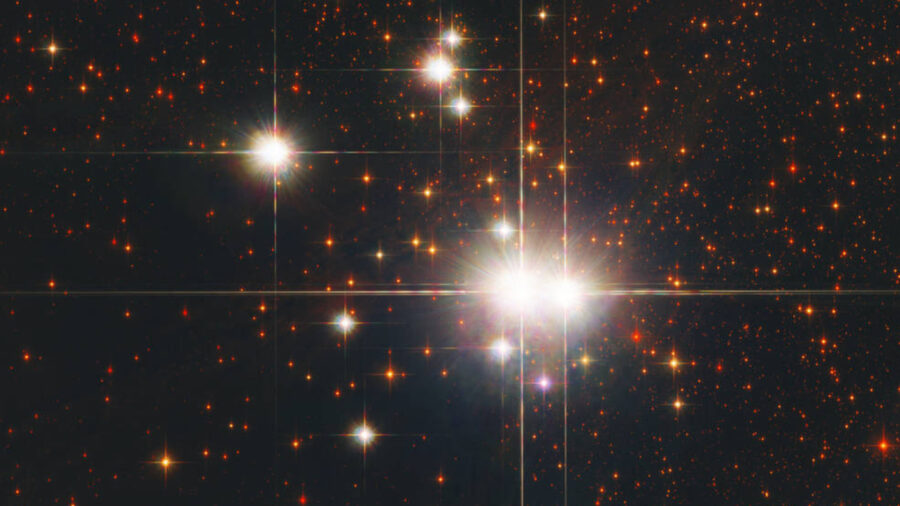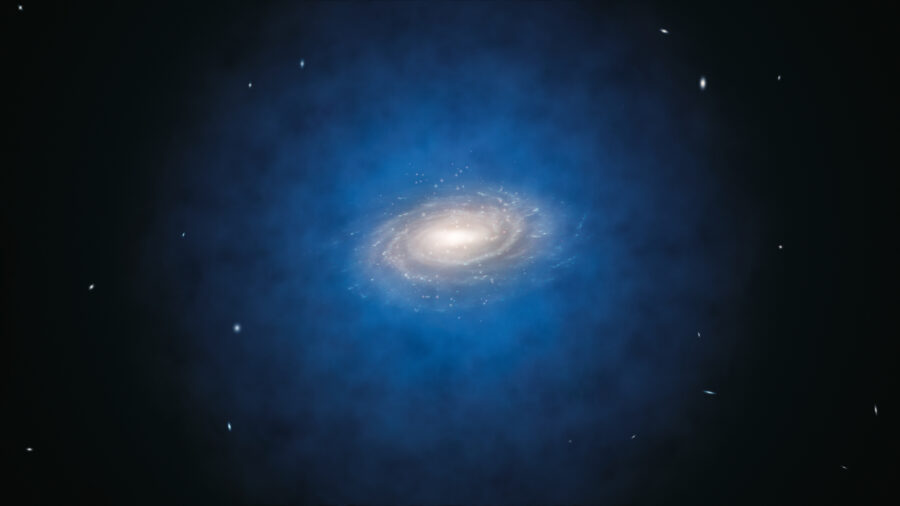Dark-Matter Detecting Spacecraft Set For Launch
Elucide, a dark matter detecting spacecraft, is being sent into space by the European Space Agency.

One of the universe’s biggest mysteries revolves around dark matter, the hypothetical material that explains why the universe has a much higher mass than you’d expect from observations. This matter, if it does exist, makes up 85% of the universe’s mass, but does not interact with light or any other electromagnetic radiation. This has so far made dark matter impossible to detect — but now The Guardian reports that the European Space Agency will soon launch a spacecraft that will try to detect it anyway.
The €1 billion ($1.1 billion) spacecraft, called “Elucid,” is designed to view a full third of the night sky at once, with the hope of uncovering the location of dark matter through a phenomenon known as “gravitational lensing.” While dark matter does not directly react to light, an object’s gravity bends light around it, meaning that gravity caused by dark matter should have a noticeable effect on the light from stars and galaxies across the universe. If light from stars passes through the dark matter’s gravitational field, Elucid should be able to detect it.
While the telescope onboard Elucid won’t be nearly as powerful as the James Webb Space Telescope, its Hubble-level power should be more than enough to produce the detail needed to detect the gravitational lensing caused by dark matter. It will be positioned in roughly the same area as the James Webb Space Telescope — the second Lagrange point, located 1.5 million kilometers (930,00 miles) from Earth. At this point, the gravity of the Earth and the Sun will combine to allow the telescope to remain a stable distance from Earth without having to orbit the planet.

The second Lagrange point is an ideal location to place telescopes since it allows a telescope to always keep the Earth, Moon, and Sun behind it, having an unimpeded view of the night sky. Meanwhile, telescopes at the second Lagrange point will still be able to gain energy from the sun and will remain close enough to Earth to easily communicate with scientists on the ground. So, with no massive bodies to block Elucid’s view, the dark matter-detecting telescope will get as clear of a picture of the night sky as we could hope for.
The spacecraft is scheduled to launch on July 1 on one of SpaceX’s Falcon 9 rockets. It was previously scheduled for a 2022 launch on a Russian Soyuz rocket, but the Ukraine invasion prompted the European Space Agency to cut all ties with Russia’s Roscosmos space agency. The James Webb Space Telescope launched aboard a different craft — the European Ariane 5 heavy-lift space launch vehicle.
It will take about a month for Elucid to reach the second Lagrange point, and once there, it will have its work cut out for it before we have enough data to detect dark matter. The telescope will have to take millions of images of galaxies to get a full view of the night sky.












